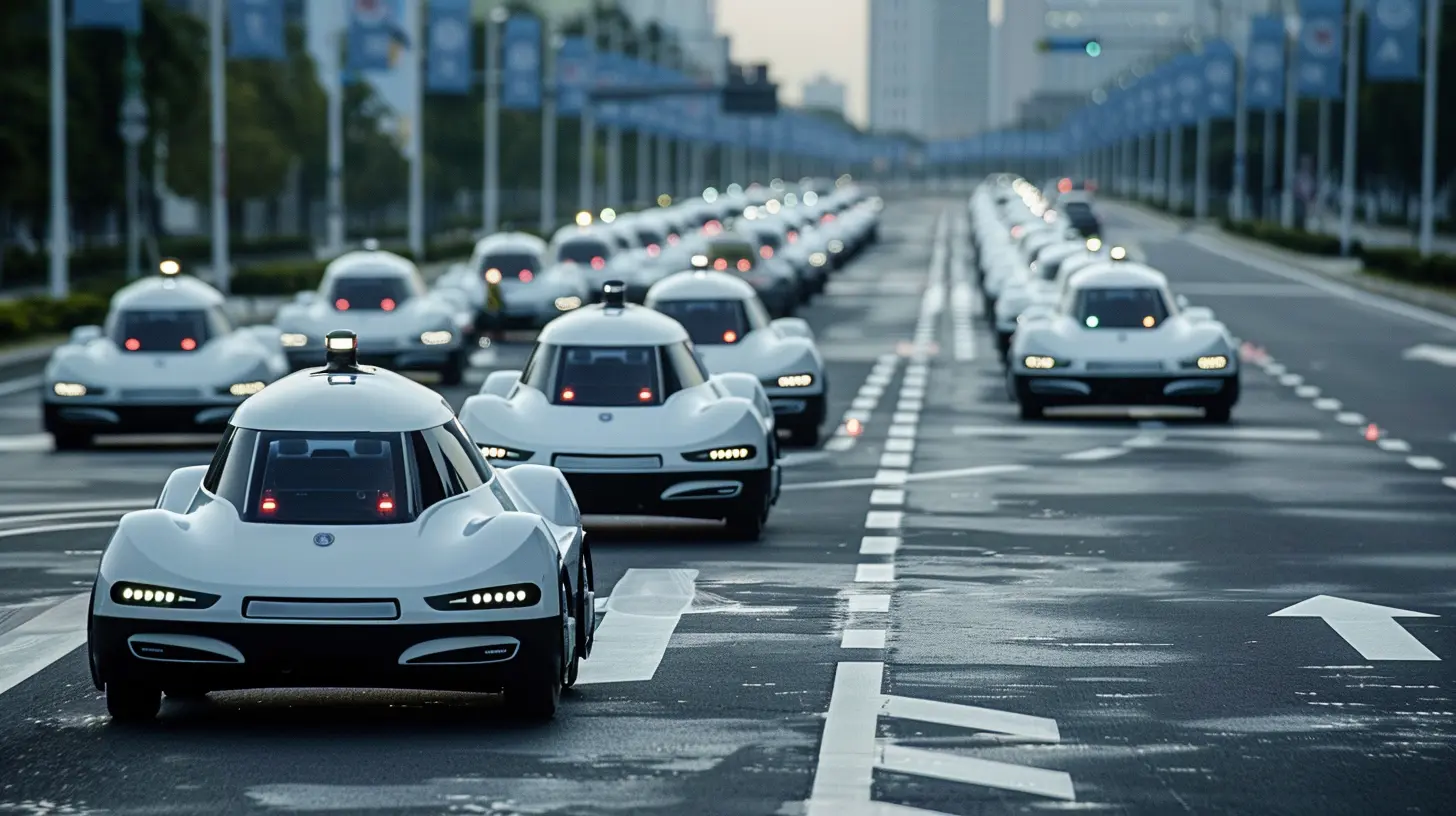How Self-Driving Cars Are Revolutionizing Urban Mobility
14 August 2025
Ever sat in bumper-to-bumper traffic during rush hour and thought, “There’s got to be a better way”? Well, good news — self-driving cars are steering us toward a smarter, smoother future on the roads. These autonomous vehicles (AVs) aren’t just about flashy tech and futuristic vibes; they’re reshaping how we move through cities, cutting down traffic jams, improving safety, and even changing the way our urban spaces are designed.
In this article, we’re diving deep into how self-driving cars are revolutionizing urban mobility — not in the far-off future, but right now.
What Exactly Are Self-Driving Cars?
Before we go full throttle, let’s get on the same page. A self-driving car, or autonomous vehicle, is one that can navigate and drive itself without human input. It uses a mix of sensors (like LiDAR, radar, and cameras), mapping tech, AI, and machine learning to understand its surroundings and make driving decisions.There are different levels of autonomy — from basic cruise control (Level 1) to fully driverless cars (Level 5). Most cars on the road today are somewhere between Level 2 and Level 3. But companies like Waymo, Tesla, Cruise, and others are aggressively pushing toward full autonomy.
The Urban Mobility Crisis — And Why AVs Matter
Cities are getting more crowded. With more people comes more cars — and with more cars come longer commutes, increased emissions, higher accident rates, and wasted time. Traditional transportation systems just aren’t cutting it anymore.That’s where self-driving cars swoop in like superheroes. They promise a cleaner, safer, and more efficient way to move through our cities. It’s not just about getting from point A to B — it’s about rethinking how we live, work, and travel in urban environments.
1. Smoother Traffic Flow = Less Congestion
Let’s face it: urban traffic is a nightmare. We've all been stuck behind someone who can't decide whether to turn or go straight. AVs don't have that problem. They communicate not just with the road but also with each other — reducing those irritating stop-start traffic patterns.Imagine fleets of autonomous cars gliding through intersections without stoplights, optimizing speed and spacing by collaborating like a school of fish. That’s not sci-fi — it’s the traffic model of the near future.
Benefits:
- Less stop-and-go traffic
- Shorter travel times
- Better fuel efficiency
- Lower stress levels for everyone
2. Enhanced Road Safety
Human error causes over 90% of car accidents. We text, we speed, we drive drowsy — and it’s dangerous. Self-driving cars don’t get distracted, tired, or drunk. They're always alert and they follow traffic rules to the letter.Advanced AI systems constantly scan surroundings, anticipate potential hazards, and make split-second decisions that even the best human drivers might miss.
How AVs Increase Safety:
- Real-time hazard detection
- Predictive braking and accident avoidance
- Elimination of drunk and distracted driving
- Enhanced response times vs. humans
It’s not just about fewer accidents — it’s about saving lives. Period.
3. Reinventing Public Transportation
Think self-driving cars only replace personal vehicles? Think again. AVs are transforming public transportation too. From autonomous shuttles to robo-taxis, cities are experimenting with new models of shared mobility.Self-driving buses and small electric pods can fill the gap between traditional transit and personal cars, especially for short trips. Picture this: calling a pod from your phone, getting picked up in minutes, and riding to the nearest train station — all without driving or waiting for a bus.
Big wins here:
- More accessible transit options
- Reduced wait times and increased coverage
- Better integration with existing transit networks
4. Reducing Parking Nightmares
You know what’s worse than traffic? Circling the block for 20 minutes looking for parking. With AVs, that becomes a thing of the past. Self-driving cars can drop you off at your destination and park themselves elsewhere — maybe even outside the city core.This means:
- Less need for massive parking lots downtown
- More space for parks, cafes, and pedestrian paths
- Reduced urban heat from asphalt wastelands
We’re talking about a complete reimagining of urban design — one where people, not cars, take center stage.
5. Accessibility for All
For people with disabilities, the elderly, or those who can’t drive, AVs are a game-changer. Independence and mobility are huge quality-of-life factors, and driverless cars remove the barrier of needing to operate a vehicle.Imagine how transformative that is — giving autonomy to people who’ve always relied on others for transportation.
Key benefits:
- Greater independence for non-drivers
- Improved access to jobs, healthcare, and social events
- Inclusive design in vehicle interiors for varying needs
It’s about equity, not just convenience.
6. Cleaner, Greener Streets
Most self-driving cars being developed today are electric. Combine that with smoother traffic flows and you get huge emissions reductions. No more idling in traffic or jerky acceleration/deceleration.Plus, with better route optimization and fewer unnecessary trips, AVs could play a key role in fighting climate change.
Green perks:
- Lower CO2 emissions
- Reduced air pollution in congested cities
- More efficient use of energy resources
It’s not just transport transformation — it’s environmental revolution.
7. Flexible and Efficient Logistics
We often forget that a huge part of urban mobility involves moving goods, not people. Self-driving delivery bots and trucks streamline urban logistics, reduce delivery times, and minimize costs for businesses.Think drones dropping off your sushi lunch or AV fleets restocking stores at night when the roads are empty. It’s not just efficient — it’s smart scheduling.
Big wins for logistics:
- 24/7 delivery potential
- Fewer delivery-related traffic jams
- Cost savings passed on to consumers
8. Economic Shifts and New Jobs
Yeah, automation worries people — and for good reason. But while some traditional driving jobs may disappear, they’ll be replaced with new opportunities in tech, maintenance, fleet management, cybersecurity, and AV customer support.It’s like when the internet showed up — sure, some industries faded, but a bunch of new ones were born.
New roles might include:
- AV system trainers and safety drivers
- Algorithm auditors
- Remote vehicle operators
- Fleet maintenance specialists
Basically, it’s not the end of jobs — it’s the evolution of them.
9. Policy and Infrastructure: The Missing Puzzle Pieces
Let's not sugarcoat it — cities still have a lot of work to do. Self-driving cars need smart infrastructure to thrive. That means updated roads, new traffic rules, and reliable 5G connections.Governments need to get with the program, crafting policies that encourage innovation while keeping public safety front and center.
What needs to happen:
- Investment in smart traffic systems
- Clear laws for AV operations
- Data privacy and cybersecurity standards
- Public education on AV safety
This isn’t just a tech issue — it’s a collaboration between engineers, city planners, lawmakers, and the public.
10. Challenges & Roadblocks
Of course, it’s not all sunshine and smooth highways. There are real concerns with AVs:- Ethical dilemmas (like crash scenarios)
- Cybersecurity risks
- Public trust and adoption
- High development costs
Plus, AV tech still isn’t perfect in bad weather or chaotic environments. These challenges aren’t deal-breakers, but they are speed bumps on the road to full autonomy.
Final Thoughts: Where We’re Headed
Self-driving cars are more than just fancy toys from Silicon Valley. They’re laying the foundation for a smarter, safer, cleaner, and more inclusive urban future. If implemented right, they can completely rewrite the rulebook for city living.Instead of being stuck behind the wheel, we’ll be free to work, relax, or even nap during our daily commutes. Our streets could become places for people again — not just parking lots and traffic lanes.
Are we there yet? Not quite. But we’re a lot closer than you think.
So buckle up — the road ahead is autonomous.
all images in this post were generated using AI tools
Category:
Autonomous VehiclesAuthor:

Kira Sanders
Discussion
rate this article
1 comments
Runevale Price
Self-driving cars: because your backseat driving days are officially over!
August 15, 2025 at 11:32 AM

Kira Sanders
Absolutely! Self-driving cars not only reduce the stress of driving but also redefine the way we experience travel and urban living.


